How to Fix ‘No audio output device is installed’ Error in Windows?
The ‘No audio output device is installed’ error is accompanied by a red cross on the speaker icon in the taskbar, preventing users from using the system sound. You can see the error message upon hovering the cursor over the cross on the sound icon.
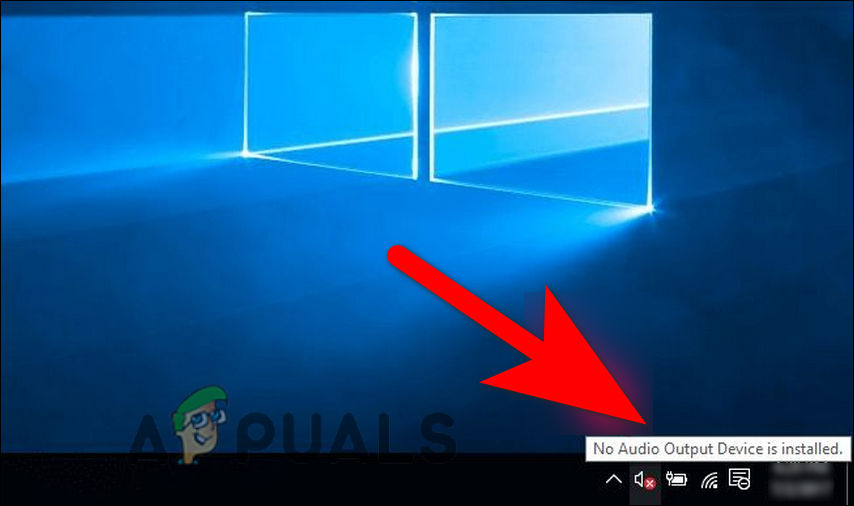
Let’s look at the troubleshooting methods that can fix the issue.
1. Update Your Audio Output Driver
In most cases, If your audio driver is outdated or corrupted, you will likely run into this error. The drivers bridge the system and the hardware components, allowing the external devices to work properly. Here are the steps to update your audio driver.
- Press the Windows + X key simultaneously on your keyboard and now click ‘Device Manager’.
- In the following window, expand the Audio inputs and outputs category.
- Locate your audio driver and right-click on it.
- Choose Update driver from the context menu.
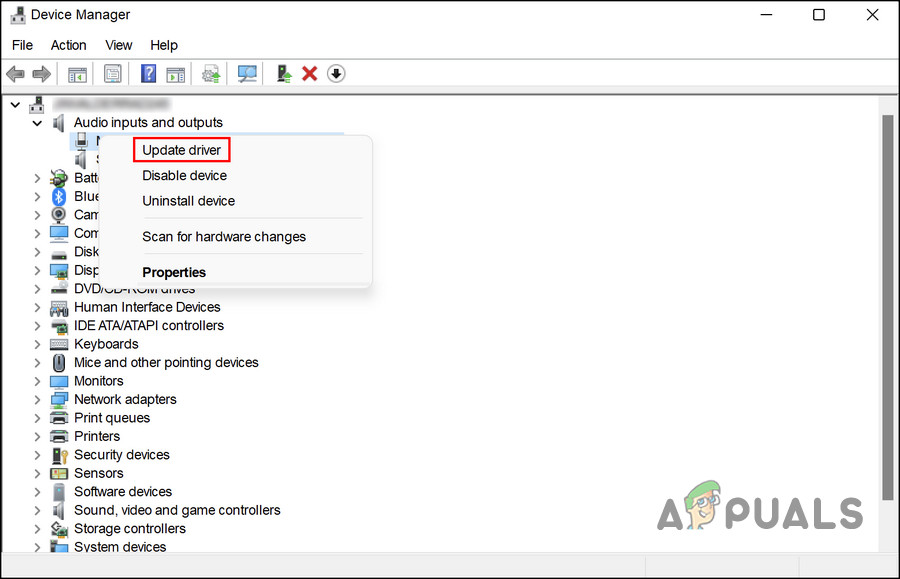
Update driver option in the context menu - Now, choose to Browse my computer for drivers.
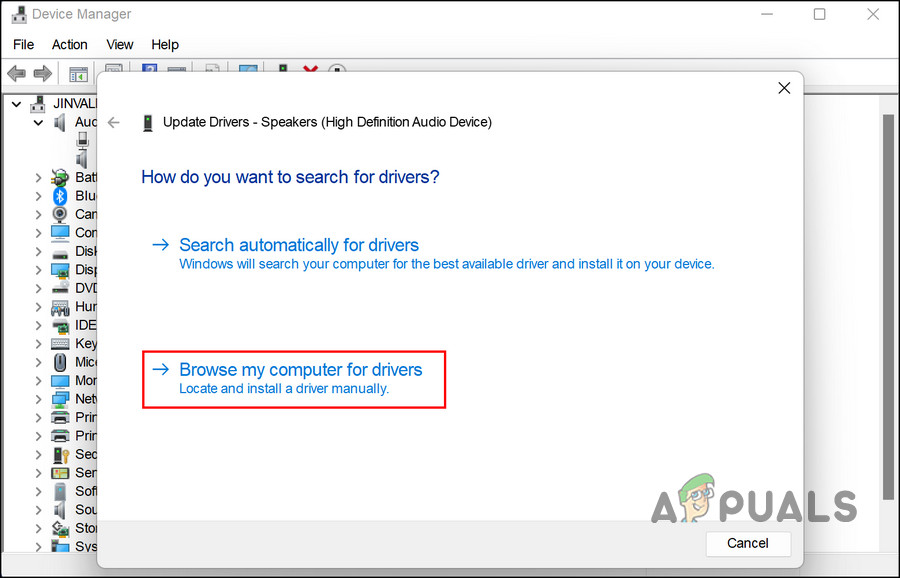
Choose the Browse my computer for drivers option - Click on Let me pick from a list of available drivers on my computer.
- Checkmark the Show compatible hardware option.

Show compatible hardware option - Pick Generic Software device and click Next.
- Once the process is complete, close the Device Manager window and see if the problem is resolved.
You can also try uninstalling the audio driver and installing the latest version from the manufacturer’s official website.
2. Manually Add the Audio Device
Systems are configured to detect and add audio devices automatically. If your system fails to do so, you can add the targeted device manually to fix the problem. If the issue is popping up because you have no device connected, then this should fix the problem.
Here is what you need to do:
- Launch Settings by pressing the Win + I keys on your keyboard simultaneously.
- Navigate to System > Sound.

Sound settings - In the following window, scroll down to the Output section and click on your targeted device.
- Hit the Allow button to Allow apps and Windows to use this device for audio.

Allow button - If you cannot locate your audio device, click on the Add device button in the Output section of Sound settings.

Add device button - Follow the on-screen instructions to add the device manually.
Once the device is added, ensure the apps and Windows are allowed to use it for audio.
3. Pick a Default Audio Device
You might also face the ‘No audio output device is installed’ error because the targeted hardware is not set as the default device. In this case, we suggest you set the targeted device as the default preference and see if that helps.
Below, we will show you how to set your speakers as the default audio device. Follow the same steps for other devices, like headphones, if that is what you are trying to use.
Follow these steps to proceed:
- Right-click on the speaker icon on your taskbar and click on Sound settings.

Sound settings option - Click More sound settings in the following window.
- Head over to the Playback tab and locate your targeted device. If you cannot find it, enable the Show disabled devices option.
- Now, right-click on the targeted device and choose Enable.
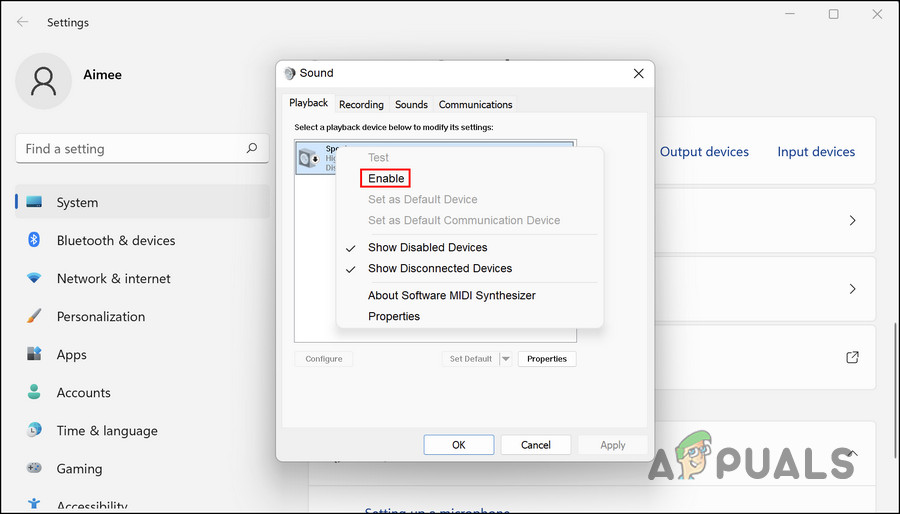
Choose Enable - Then, right-click on it again and choose Set as Default device from the context menu.
You can now see if the targeted device is working properly.
4. Disable Third-Party Driver Updater (If Applicable)
You can also install the latest driver and system updates automatically by using third-party software, but there are times when these programs cause issues like the one at hand.
According to a few affected users, the issue was caused by such programs installed on their system, and they were able to fix the issue after uninstalling the utility. If you are using any such tool, we suggest you uninstall it and check if that helps you get the audio back.
5. Use the Built-In Troubleshooter
You can also try running the audio troubleshooter to fix the ‘No audio output device is installed’ error.
Here is what you need to do:
- Right-click on the speaker icon on the taskbar.
- Choose Troubleshoot sound problems from the context menu.

Troubleshoot sound problems option - This should launch the troubleshooter automatically. After the troubleshooter completes its scan, it will display the issues identified alongside their fixes. Click on Apply this fix to resolve the problem.
Alternatively, you can manually run the troubleshooter as well. Here is how:
- Press the Win + I keys together to open the Settings app.
- Choose Sound in the following window.
- Now, scroll down to the Advanced section and click on Output devices next to the Troubleshoot common problems option.
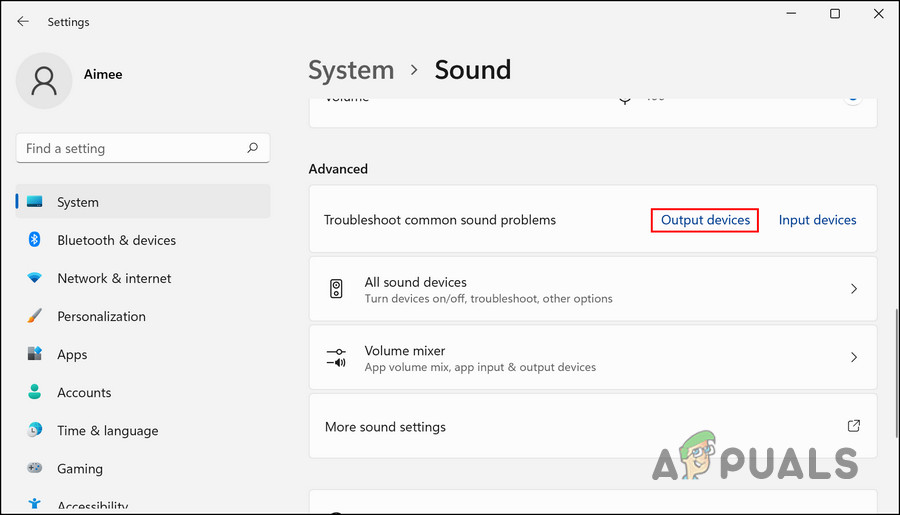
Output devices settings - In the following Get Help dialog, click Yes to proceed.
- The utility will now scan your device for potential issues and fix any found.
If the utility fails to fix the ‘No audio output device is installed’ error, click on the Contact support button in the same window. You can then report the issue to Microsoft’s official support team. They will be able to pinpoint the exact cause of the issue and suggest a relevant fix that will fix the error once and for all.